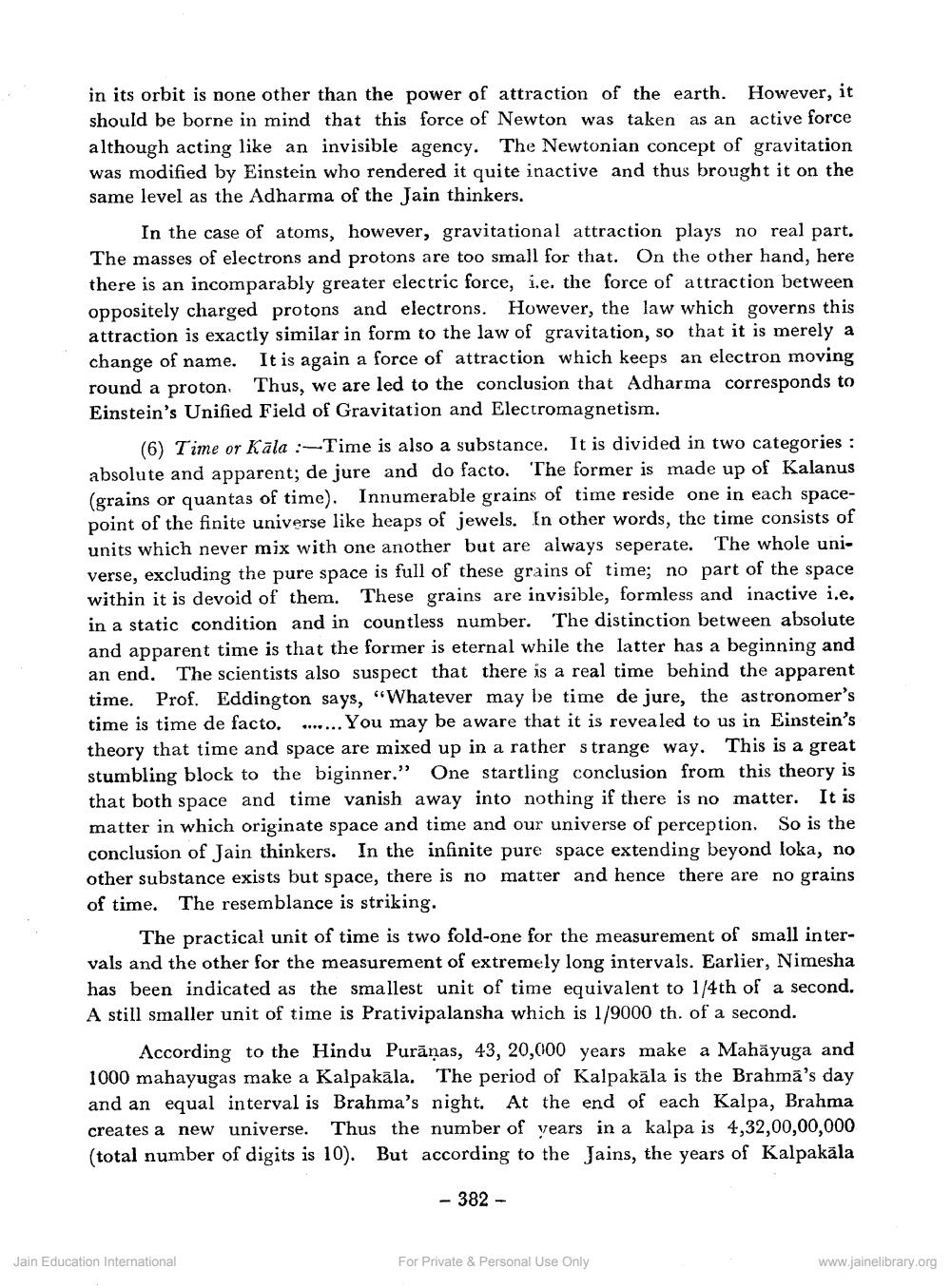Book Title: Space Time and The Universe Author(s): G R Jain Publisher: Z_Kailashchandra_Shastri_Abhinandan_Granth_012048.pdf View full book textPage 8
________________ in its orbit is none other than the power of attraction of the earth. However, it should be borne in mind that this force of Newton was taken as an active force although acting like an invisible agency. The Newtonian concept of gravitation was modified by Einstein who rendered it quite inactive and thus brought it on the same level as the Adharma of the Jain thinkers. In the case of atoms, however, gravitational attraction plays no real part. The masses of electrons and protons are too small for that. On the other hand, here there is an incomparably greater electric force, i.e. the force of attraction between oppositely charged protons and electrons. However, the law which governs this attraction is exactly similar in form to the law of gravitation, so that it is merely a change of name. It is again a force of attraction which keeps an electron moving round a proton. Thus, we are led to the conclusion that Adharma corresponds to Einstein's Unified Field of Gravitation and Electromagnetism. (6) Time or Kāla Time is also a substance. It is divided in two categories : absolute and apparent; de jure and do facto. The former is made up of Kalanus (grains or quantas of time). Innumerable grains of time reside one in each spacepoint of the finite universe like heaps of jewels. In other words, the time consists of units which never mix with one another but are always seperate. The whole universe, excluding the pure space is full of these grains of time; no part of the space within it is devoid of them. These grains are invisible, formless and inactive i.e. in a static condition and in countless number. The distinction between absolute and apparent time is that the former is eternal while the latter has a beginning and an end. The scientists also suspect that there is a real time behind the apparent time. Prof. Eddington says, "Whatever may be time de jure, the astronomer's time is time de facto........ You may be aware that it is revealed to us in Einstein's theory that time and space are mixed up in a rather strange way. This is a great stumbling block to the biginner." One startling conclusion from this theory is that both space and time vanish away into nothing if there is no matter. It is matter in which originate space and time and our universe of perception. So is the conclusion of Jain thinkers. In the infinite pure space extending beyond loka, no other substance exists but space, there is no matter and hence there are no grains of time. The resemblance is striking. The practical unit of time is two fold-one for the measurement of small intervals and the other for the measurement of extremely long intervals. Earlier, Nimesha has been indicated as the smallest unit of time equivalent to 1/4th of a second. A still smaller unit of time is Prativipalansha which is 1/9000 th. of a second. According to the Hindu Purāņas, 43, 20,000 years make a Mahāyuga and 1000 mahayugas make a Kalpakāla. The period of Kalpakāla is the Brahmā's day and an equal interval is Brahma's night. At the end of each Kalpa, Brahma creates a new universe. Thus the number of years in a kalpa is 4,32,00,00,000 (total number of digits is 10). But according to the Jains, the years of Kalpakāla - 382 - Jain Education International For Private & Personal Use Only www.jainelibrary.orgPage Navigation
1 ... 6 7 8 9 10 11 12 13
